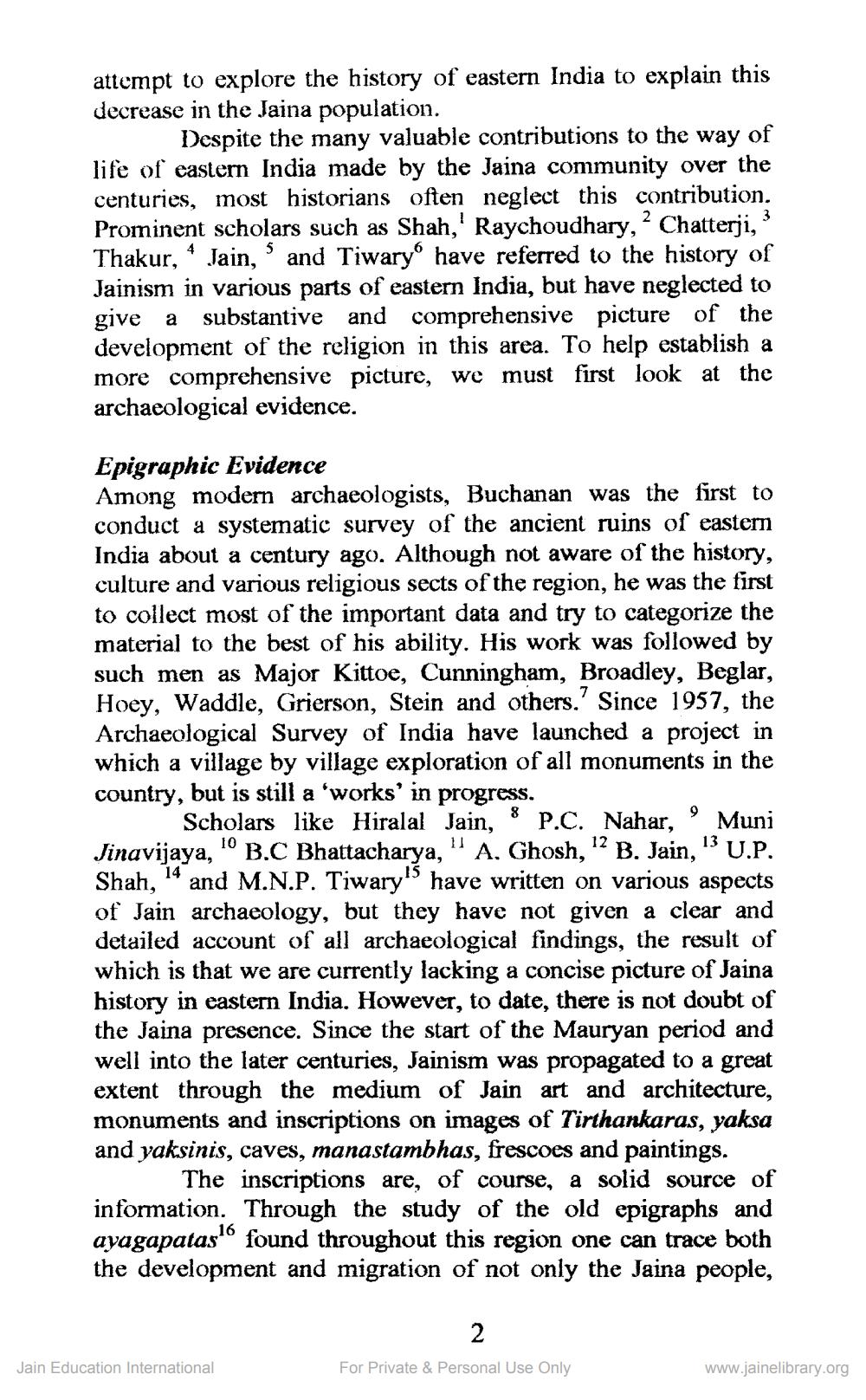________________
attempt to explore the history of eastern India to explain this decrease in the Jaina population.
3
5
Despite the many valuable contributions to the way of life of eastern India made by the Jaina community over the centuries, most historians often neglect this contribution. Prominent scholars such as Shah,' Raychoudhary, 2 Chatterji, " Thakur, Jain, and Tiwary" have referred to the history of Jainism in various parts of eastern India, but have neglected to give a substantive and comprehensive picture of the development of the religion in this area. To help establish a more comprehensive picture, we must first look at the archaeological evidence.
Epigraphic Evidence
Among modern archaeologists, Buchanan was the first to conduct a systematic survey of the ancient ruins of eastern India about a century ago. Although not aware of the history, culture and various religious sects of the region, he was the first to collect most of the important data and try to categorize the material to the best of his ability. His work was followed by such men as Major Kittoe, Cunningham, Broadley, Beglar, Hoey, Waddle, Grierson, Stein and others. Since 1957, the Archaeological Survey of India have launched a project in which a village by village exploration of all monuments in the country, but is still a 'works' in progress.
8
Scholars like Hiralal Jain, P.C. Nahar, Muni
10
11
12
13
14
15
Jinavijaya, B.C Bhattacharya, A. Ghosh, B. Jain," U.P. Shah, and M.N.P. Tiwary" have written on various aspects of Jain archaeology, but they have not given a clear and detailed account of all archaeological findings, the result of which is that we are currently lacking a concise picture of Jaina history in eastern India. However, to date, there is not doubt of the Jaina presence. Since the start of the Mauryan period and well into the later centuries, Jainism was propagated to a great extent through the medium of Jain art and architecture, monuments and inscriptions on images of Tirthankaras, yaksa and yaksinis, caves, manastambhas, frescoes and paintings. The inscriptions are, of course, a solid source of information. Through the study of the old epigraphs and ayagapatas1 found throughout this region one can trace both the development and migration of not only the Jaina people,
Jain Education International
9
16
2
For Private & Personal Use Only
www.jainelibrary.org




